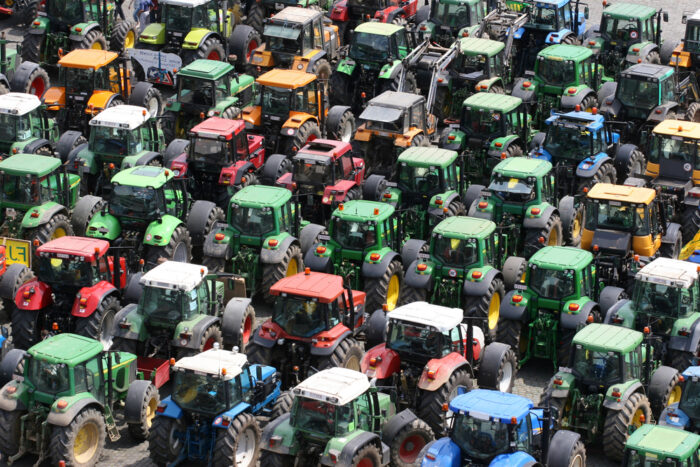The Progressive Post
Valuing biodiversity in itself (firstly) and for us (secondly)

A triple planetary crisis is unfolding before our eyes. Climate change, pollution and biodiversity loss have a common cause: humans’ destructive attitude towards nature. The decline of biodiversity – a major threat to human subsistence and wellbeing – has long been overlooked. It is time for governments at all levels to prioritise this systemic crisis.
The beginning sixth mass extinction is a global phenomenon that involves the decline and loss of populations and entire species at a pace far exceeding ‘normal’ extinction rates. It is rapid, largely invisible, and most frightening of all: irreversible.
The currently observed pace of extinction of different taxa across the entire tree of life is tens to hundreds of times higher than what scientists call ‘background extinction rate’. The number of extinctions recorded over the past five centuries would have taken 800 to 10,000 years to occur under standard evolutionary circumstances. The speed and geographical scale of the phenomenon are far larger than expected, justifying the alarming predictions scientists have made for decades, mostly about freshwater biodiversity.
But why should one worry about the possible extinction of apparently irrelevant species like an almost unknown frog in the tropical forest, or a small rodent only living on one island off the Australian coast? Incidentally, the rodent was Melomys rubicola, the first mammalian species whose extinction was scientifically recorded. There are several possible answers to this question, depending on the worldview we embrace.
According to the latest IPBES report, the Assessment Report on Diverse Values and Valuation of Nature, the living world holds a plurality of values beyond the utilitarian approach to nature conservation. This utilitarian approach only values nature based on its ‘usefulness’ for humans, implying that only the part of nature that provides resources, or ensures the fundamental ecosystem services on which human societies depend, should be protected, whereas the ‘unproductive’ or ‘superfluous’ part of the living world is deemed unworthy of any importance or dignity. But biodiversity is not just a resource, not just a ‘capital’.
Yet, different societies, cultures, and peoples have established diverse relationships with the nonhuman world and different ways of valuing it. The IPBES Values Assessment Report summarises this diversity by stating that people can perceive themselves as living ‘from’ nature, ‘in’ nature, ‘with’ nature, or ‘as’ nature. These distinctions exemplify the various degrees of connection, even kinship, towards non-living beings, ranging from complete detachment to total identification with the local environment.
The relationships between people and nature are rich and diverse. Nevertheless, hardly any policies acknowledge this diversity. Instead, most decisions affecting the relationship between human and nonhuman nature are based on a limited set of market-driven, instrumental values. Such dependence ‘of political and economic decisions on a narrow set of nature’s diverse values underpins the global biodiversity crisis’, as IPBES emphasises. ‘Incorporating a wider set of values and perspectives into policy design and implementation can address the negative effects of people’s actions on nature’.
Moving away from an instrumental approach to nature can reveal that the connection between nature and people is bidirectional. Nature provides us with essential goods and services, but it could also be sustained by (low-intensity) human activities. To stress this interdependence, some have proposed pairing the concept of ‘nature’s contributions to people’ with ‘people’s contributions to nature‘ to highlight the ‘inextricable link‘ between our species and the rest of the living world.
Shortly after the Paris Agreement, the Stockholm Resilience Centre proposed a new visual representation of the Sustainable Development Goals (SDGs) established in Paris in 2015: the ‘wedding cake‘. The 17 goals are organised hierarchically, with the environmental goals in the first, basal layer, and the social and economic ones in the second and third layers, respectively. This image illustrates the entanglement between environmental and social issues that characterises our current epoch. The SDGs framework acknowledges that preserving the biological and ecological diversity of the Earth is a crucial prerequisite not only for ensuring environmental sustainability but also for guaranteeing social justice for both the most vulnerable people today and future generations.

Creative Commons license CC BY-ND 3.0
Human societies and cultures are inextricably linked to the ecological environment in which they evolved, making it essential to recognise this interconnection in policy design to ensure both environmental and social sustainability. Two dimensions need to be considered in this regard. On the one hand, a utilitarian approach to nature should not be completely disregarded, as nature plays a fundamental role in the existence of human societies. The seminal IPBES 2019 Global Assessment Report emphasises that nature’s contributions to people are diverse, underpinning human health and well-being, and providing essential resources, such as food, medicines, clean water, pollination, ecological regulating services and the prevention of future pandemics. It is important to acknowledge that ‘some contributions of nature are irreplaceable’. On the other hand, however, this instrumental perspective must not shade the complexity that characterises the varied relationships in which humans and nature have been engaged over history. Non-instrumental values are just as critical as the market-driven approach in informing and guiding policy decisions at all levels: biodiversity has a value by itself, an evolutionary value, as a result of the tree of life, and it is hard to find any philosophical or logical reason according to which we should have the right to destroy other forms of life and other branches of the tree of life.
The Kunming-Montreal Global Biodiversity Framework, adopted by the 196 national members of the Convention on Biological Diversity (CBD) in December 2022, represents a tentative first step in this direction. The dramatic loss of biodiversity is a global systemic process (due to a convergence of factors: like deforestation, invasive species, demographic growth, pollution, overexploitation and climate change) and requires global systemic approaches, including taxation and financial instruments. This document, which sets the path for governments across the world to protect the bio-ecological legacy of the world until 2030, places unprecedented emphasis on traditional and local socio-ecological knowledge, acknowledging it as comparably important to Western scientific tradition in safeguarding biodiversity. A figure can easily illustrate the direct interdependence between ecological ‘health’ and traditional cultures: Indigenous and local peoples occupy only 5 per cent of the Earth’s lands, yet the territories they manage encompass 80 per cent of the global biodiversity. They are preserving the conditions of our lives as well.
Biological and ecological diversity is the very foundation of our survival and well-being on this planet. However, the widespread short-sided and economistic approaches (compensations, greenwashing, etc.) towards vulnerable beings, both human and nonhuman, are threatening the current configuration of life on Earth, posing existential risks in environmental, social, and economic dimensions.
To face this challenge, the progressive movements must update the philosophical bases of environmentalism. We need a scientific, humanistic, popular, pragmatic and radical environmentalism. The interests of nature and biodiversity are our interests. All European Constitutions should introduce the words ‘environment’, ‘ecosystems’ and ‘biodiversity’ in their articles, as Italy did in 2022. It is high time we reconsider our relationship with the nonhuman world, shifting towards a more horizontal, participatory, and democratic way of governing interspecific relationships, and decentring our supposed superiority. Our values, our wellbeing and our very existence are at stake.




